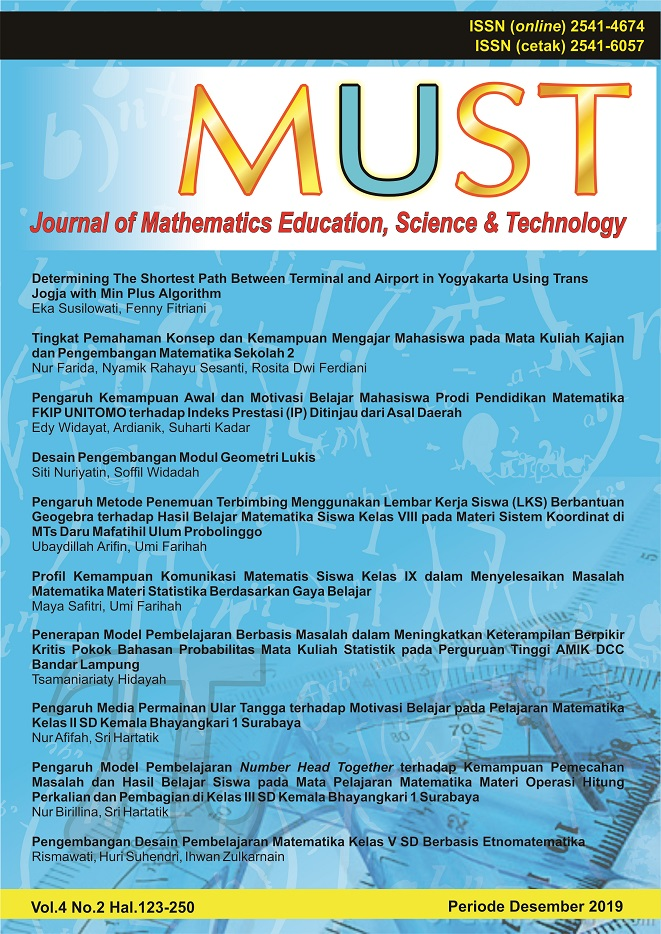Desain Pengembangan Modul Geometri Lukis
Abstract
Full text article
References
Aslan-Tutak, F., & Adams, T. L. (2015). A Study of Geometry Content Knowledge of Elementary Preservice Teachers. International Electronic Journal of Elementary Education, 7(3), 301-318.
Ball, D. L., Thames, M. H., & Phelps, G. (2008). Content Knowledge for Teaching: What Makes It Special? Journal of Teacher Education, 59(5), 389-407.
Cankoy, O. & Darbaz, S. (2010). Effect of A Problem Posing Based Problem Solving Instruction on Understanding Problem. Hacettepe University Journal of Education, 38, 11-24.
Goos, M. (2013). Knowledge for Teaching Secondary School Mathematics: What Counts? International Journal of Mathematical Education in Science and Technology, 44(7), 972-983.
Khabibah, S. (2006). Pengembangan Model Pembelajaran Matematika dengan Soal Terbuka untuk Meningkatkan Kreativitas Siswa Sekolah Dasar. Surabaya: Disertasi. Tidak dipublikasikan.
Mewborn, D. (2001). Teachers Content Knowledge, Teacher Education, and Their Effects on The Preparation of Elementary Teachers in The United States. Mathematics Teacher Education and Development, 3, 28-36.
Nuriyatin, S. & Widadah, S. (2019). Kemampuan Pengajuan Soal Geometri Lukis Mahasiswa Pendidikan Matematika. Prosiding Seminar Nasional Pendidikan Matematika 2019, p-ISSN 2528-4460, e-ISSN 2581-0634, 378-383.
Silver, E. A., & Chai , J. (1996). An Analysis of Arithmetic Problem Posing by Middle School Students. Journal For Research In Mathematic Education, 27(5), 521-539.
Thiagarajan, S., Semmel, D. S., & Semmel, M. I. (1974). Instructional Development for Trining Teachers of Exceptional Children. Minnesota: University of Minnesota.
Turhan, B. & Guven, M. (2014). The Effect of Mathematics Instruction with Problem Posing Approach on Problem Solving Success, Problem Posing Ability and Views Towards Mathematics. Cukurova University Faculty of Education Journal, 43(2), 217-234.
Authors
Authors who publish with this journal agree to the following terms:
- Authors retain copyright and grant the journal right of first publication with the work simultaneously licensed under a Creative Commons Attribution-NonCommercial 4.0 International License that allows others to share the work with an acknowledgment of the work's authorship and initial publication in this journal.
- Authors are able to enter into separate, additional contractual arrangements for the non-exclusive distribution of the journal's published version of the work (e.g., post it to an institutional repository or publish it in a book), with an acknowledgment of its initial publication in this journal.
- Authors are permitted and encouraged to post their work online (e.g., in institutional repositories or on their website) prior to and during the submission process, as it can lead to productive exchanges, as well as earlier and greater citation of published work

